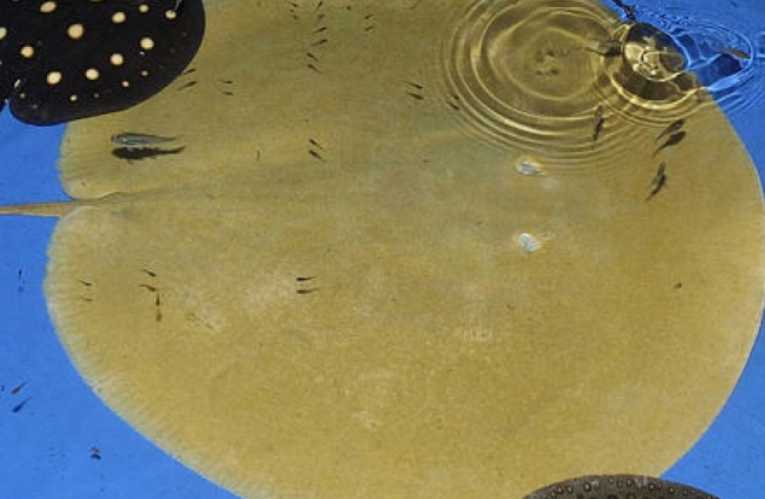Image Copyright © David Webber, Heliotrygon gomesi.
Scientists have discovered two large species of stingray living in Amazonian basin in Peru, Ecuador and Brazil. The 80cm diameter, 25 kilo pancake-shaped beasts were found in the deeper channels of the river.
Marcelo Rodrigues de Carvalho, ichthyologist at the University of Sao Paulo in Brazil was lead scientist and published his results in the journal Zootaxa. In the vast Amazon basin, new freshwater species are discovered every day, mostly of smaller fishes like tetras, catfish that live in the shallow streams. 'It is remarkable though, to describe a whole new genus,' said Carvalho, 'these rays occur in the deeper, murky turbid waters and I believe that there as many as 10 - 15 more stingray species yet unknown to science out there in that river system.'
The giant pancake-shaped beasts belong to the first new genus of stingrays to be found in the Amazon in over twenty years, although they have been exported by the aquarium trade for over 15 years, called China rays. The new genus is confirmed as Heliotrygon, after the Greek Helios for sun, relating to the hundred-plus strands of cartilage radiating from its centre; and trygon, Greek for stingray.
The two new species Heliotrygon gomesi, and Heliotrygon rosai both have very small eyes, short but toxin-laden stingers and are largely active at night. The scientists used baited long lines to catch the stingrays and had to avoid being accidentally stung. 'Most Amazonian stingrays are more feared by indigenous peoples than piranhas, the barbed, serrated stinger delivers a potent toxin that creates a wound that is very slow to heal,' added Carvalho, ' but the two new species are harmless, having only a tiny, short stinger.'
Like all stingrays their mouths are on the underside of the body and it is likely that they work as ambush predators, rising up out of the mud and silt to gulp small fish as they swim by. Little is known about the new species, including whether or not they are endangered. Like many larger Amazonian fishes overfishing, habitat loss and alteration are likely to be threats.
The vastly rich biodiversity of the Amazon region continues to deliver a new species to science every three days, according to a WWF report published in 2010.










